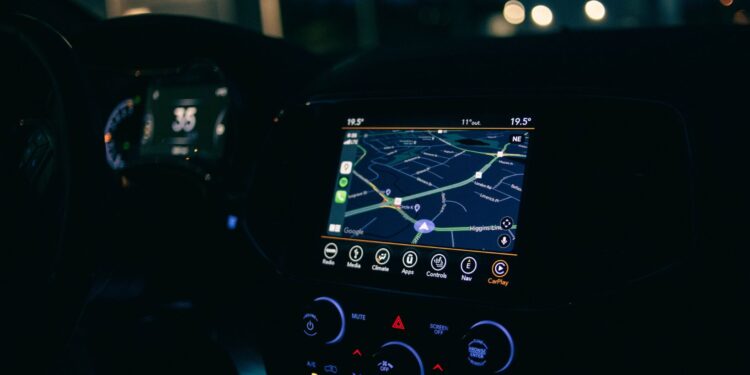As cities in the U.S. work to modernize their public infrastructure, Ontario, California, is upgrading its bus systems with new digital tools to improve safety, efficiency, and the rider experience. The city is adding GPS tracking, real-time scheduling apps, onboard sensors, and smart fare systems, moving local transit into a new era of smart mobility.
These upgrades provide clear benefits, such as shorter wait times, better route accuracy, and easier navigation for riders. They also have important safety implications. The same digital tools that make transit operations more efficient can help prevent crashes, assist in accident investigations, and hold transit agencies accountable. It’s important for both riders and legal professionals focusing on transit safety to understand how these technologies work and what their limits are.
GPS Tracking: Enhancing Visibility and Response Times
Modern GPS systems do more than show a bus’s location—they provide real-time data that can improve safety and response in emergency situations. With GPS-enabled buses, transit authorities can track vehicle speed, monitor route deviations, and respond more quickly to collisions or breakdowns. If a crash occurs, this data can serve as critical evidence to reconstruct what happened.
For riders, GPS also enhances transparency. Passengers can use apps or transit websites to view bus locations, arrival times, and even delay notices. This helps reduce uncertainty and prevent risky behavior, such as crossing busy intersections prematurely to catch a bus. When integrated properly, GPS systems are a foundational piece of smart transit safety.
Scheduling Apps and Real-Time Updates Improve Reliability
Mobile scheduling apps are revolutionizing how people interact with Ontario’s transit system. Riders can now check arrival times, receive live service alerts, and plan multi-leg trips directly from their phones. This reduces missed connections and the need to rush for a bus—both of which can contribute to on-road accidents and pedestrian injuries.
From an operational standpoint, these tools help transit agencies manage routes more dynamically. If traffic, construction, or accidents create delays, real-time updates can be sent to both riders and drivers. While not a substitute for safe driving habits, intelligent scheduling reduces the pressure on drivers to “make up time,” decreasing the likelihood of reckless driving caused by behind-schedule routes.
Onboard Cameras and Sensors Help Monitor Driver Behavior
Many of Ontario’s newer buses are equipped with inward-facing cameras and motion sensors that monitor driver actions in real time. These tools can detect signs of fatigue, distraction, or unsafe maneuvering, allowing supervisors to intervene before a dangerous incident occurs. In the event of a crash, footage and sensor data can provide irrefutable evidence of what went wrong.
However, constant surveillance also raises questions about how much responsibility is placed on the individual driver versus the system’s design and operation. While these tools offer accountability, they must be paired with strong driver support policies to ensure that fatigue, scheduling demands, and external pressures aren’t ignored. Used correctly, onboard monitoring enhances safety without shifting blame unfairly.
Collision Avoidance Systems Are Becoming Standard
Advanced driver-assistance systems (ADAS), including forward-collision warnings, automatic emergency braking, and lane departure alerts, are increasingly found in public transit vehicles. These technologies act as second sets of eyes and reflexes, helping drivers react more quickly to sudden hazards like stopped traffic, pedestrians, or unexpected lane changes.
For a city like Ontario, where buses travel through a mix of residential neighborhoods, school zones, and major thoroughfares, these systems are especially valuable. While not foolproof, collision avoidance tools significantly reduce the likelihood of certain types of crashes. Transit agencies that invest in them demonstrate a commitment to both passenger safety and pedestrian protection.
Digital Integration Aids Legal Investigations
When bus accidents happen, digital systems offer a wealth of information that can support legal claims and clarify fault. GPS logs, dashcam footage, driver performance data, and automated braking records can all play a role in determining whether human error, mechanical failure, or negligence contributed to the incident.
An experienced legal team, such as the Jacoby & Meyers bus crash lawyers serving Ontario, will know how to secure and analyze this data effectively. These digital records often mean the difference between a denied claim and full compensation. They not only support individual cases but also highlight systemic issues, like faulty sensors or poorly maintained safety equipment.
Rider-Facing Tech Brings Safety and Accessibility Together
Beyond backend systems, many buses now feature rider-friendly innovations that enhance safety and accessibility. Digital screens show next stops and transfer points, audio announcements help visually impaired riders, and onboard emergency buttons offer quick access to assistance. These tools create a more inclusive environment while reinforcing safety protocols.
Importantly, this tech can also prevent distractions that previously caused issues for drivers. Clear signage and real-time updates reduce the number of rider questions or interactions mid-drive. As passenger tech evolves, it plays a dual role—improving experience while allowing drivers to focus fully on the road.
The Digital Divide and Equity in Smart Transit
As promising as digital tools are, not all riders have equal access to smartphones, data plans, or app-based navigation. Ontario must ensure that smart transit doesn’t unintentionally exclude low-income, elderly, or disabled passengers. Printed schedules, multilingual instructions, and offline-friendly kiosks should still be part of the equation.
Equity must be considered in every upgrade. A truly smart transit system is one that serves all users safely and effectively, regardless of their technological comfort or financial means. Prioritizing universal design and alternative access points ensures that the push toward smart transit does not leave vulnerable populations behind.
Building a Smarter, Safer Transit Future
The rise of digital tools in Ontario’s bus fleets represents a positive shift toward safer, more efficient public transportation. GPS tracking, real-time scheduling, onboard monitoring, and collision prevention systems are no longer optional—they’re essential components of a modern, responsible transit system.
But technology alone isn’t enough. True safety comes from combining digital innovation with thoughtful policy, strong driver training, infrastructure investment, and public accountability. As Ontario continues to modernize its transit network, embracing smart tools while staying grounded in rider safety will be key to building a system that works for everyone.











































































































